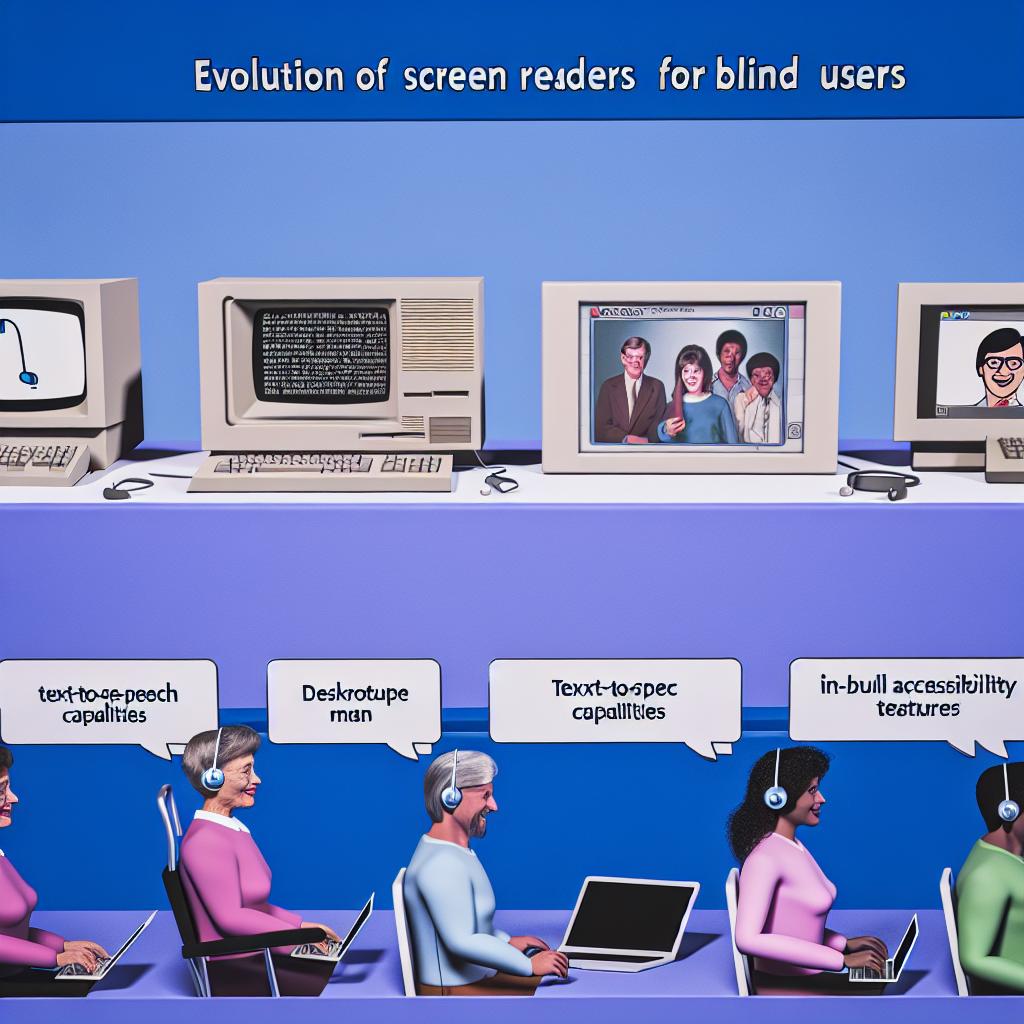The Beginnings of Screen Readers
Screen readers are a type of assistive technology that have played a pivotal role in enabling blind or visually impaired individuals to interact effectively with digital environments. By converting digital text into audible speech, these tools allow users to perform tasks on computers and navigate the internet with greater ease. The evolution of screen readers from their early beginnings to sophisticated modern applications is a testament to the technological advancements that have greatly enhanced accessibility.
One of the earliest commercial screen readers, known as Versatile Speech, emerged in the early 1980s. This initial solution was hardware-based, requiring a physical connection to a computer to function. It worked by transforming textual data into speech through basic synthesizers. Although rudimentary by today’s standards, Versatile Speech marked the inception of technology that would become essential for millions of users worldwide.
Transition to Software Solutions
In the late 1980s and early 1990s, the field of screen readers witnessed a notable transition from hardware to software-based solutions. This shift allowed for greater flexibility and integration with existing computer systems. The software programs that were developed during this period could be used with operating systems such as MS-DOS, which employed textual interfaces that were ideal for screen reader interpretation. This compatibility facilitated the widespread adoption of screen readers, overcoming many limitations faced by their hardware counterparts.
The software-based approach also enabled the introduction of more advanced speech synthesizers, which significantly improved the quality and clarity of the audio output. As a result, users could engage with digital information more efficiently, paving the way for enhanced user experiences and greater adoption.
The Role of Microsoft Windows
The debut of Microsoft Windows 3.0 in 1990 represented a major turning point in the evolution of screen readers. While the graphical user interface (GUI) of Windows provided a more visually rich interaction environment, it also posed significant challenges for screen readers that were initially designed to handle text-only interfaces.
To address these challenges, innovative solutions like JAWS (Job Access With Speech) were developed. JAWS and similar screen readers introduced a method known as the off-screen model (OSM), which involved creating a virtual text representation of the graphical environment. This enabled users to navigate the GUI using text-to-speech technology or Braille displays, thereby maintaining access to digital content despite the increased complexity of new operating systems.
Advancements in Web Accessibility
The advent of the World Wide Web brought new dimensions to screen reader technology, requiring adaptations to support web browsing activities. As the internet became an indispensable tool for communication and information retrieval, ensuring accessibility for all users, including those reliant on screen readers, became imperative.
The establishment of the Web Content Accessibility Guidelines (WCAG) laid a foundation for creating accessible digital content. These guidelines have guided developers in ensuring that website content is accessible and usable by people with disabilities, including those utilizing screen readers. By providing a comprehensive framework for accessibility, WCAG has played a vital role in leveling the playing field and fostering an inclusive digital environment.
Modern Screen Readers and Future Prospects
Today’s screen readers, such as NVDA (NonVisual Desktop Access) and VoiceOver, have evolved into powerful tools with advanced capabilities. They support a vast array of languages, browsers, and applications, making them essential components of daily life for many users. From browsing the internet to writing code, these modern screen readers empower users by enabling them to undertake complex digital tasks independently.
The rise of mobile technology has also significantly impacted screen reader development. Voice assistants and built-in screen readers are now ubiquitous features of smartphones and tablets, allowing users to access information and services on the go. This accessibility is integral to fostering independence and improving quality of life.
Looking forward, the future of screen reading technology is promising. Advances in artificial intelligence and machine learning are set to revolutionize the way screen readers function, enhancing their capabilities and improving user experiences even further. These advancements will likely enable screen readers to better understand context, interpret complex layouts, and offer more personalized assistance.
As accessibility becomes increasingly recognized as a right rather than a privilege, the role of screen readers in promoting inclusivity and equal access to digital spaces will only continue to grow. The ongoing innovation within this field promises to make the digital world more accessible and inclusive for everyone, regardless of their visual abilities. As these technologies evolve, they will continue to play a crucial role in bridging the digital divide and empowering users with visual impairments to participate fully in the digital age.
